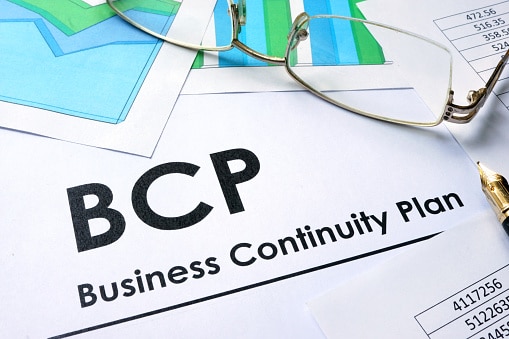Microsoft Windows Outage CrowdStrike Analysis Highlights Security Risks An unexpected [...]
In business, one of your greatest assets is foresight. Put your planning potential to good use with a solid business continuity plan to ensure your company survives any incident, big or small.

When it comes to business, we have to foresee an entire range of potential bumps in the road. From minor challenges like toll bridges or traffic jams. To serious threats such as black ice in a sudden white out. Having an established business continuity plan in place will help you foresee potential threats to your company’s operation, prepare for these problems, ensure a speedy recovery, and mitigate major loss. Although we wish you nothing but safe travels, your company’s journey might not always cover freshly paved roads on sunny days. Follow these eight steps to creating an effective business plan so you can rest easy knowing that in the event of flat, you have a spare tire in the trunk and the tools to get you back on the road.
- Identify Potential Threats– If there was ever a time for telling scary stories, this is it. An effective business continuity plan is one which prepares for a myriad of situations including minor hiccups such as a brief power outage to problems like natural disasters which completely halt operations. One of the qualities which set people apart from the animal kingdom is our exceptional ability to imagine, foresee, predict, and prepare for a countless number of possible future scenarios. This foresight is especially handy in the business world; putting it to good use in your business continuity plan will ensure you are well prepared for a host of challenges.
- Have a Backup Plan – An essential part of any business continuity plan takes place prior to an actual emergency, backing up everything. Be sure all essential data has a backup located offsite. Plan an alternative power strategy (such as a spare generator), a temporary location for operations, replacements for essential supplies and equipment, and even an alternative means of communication.
- Lay Out an Initial Response Protocol– This plan should specify a chain of command in the event of an emergency, and it should also designate members of an incident management or disaster recovery team. (Keep in mind that members might vary depending on the type of incident.) This ensures that anyone potentially involved in the incident knows whom to notify first and also ensures no time is wasted deciding whose responsibility it is to take charge.
- Plan an Impact Assessment– During any emergency, chaos can easily overwhelm. A quick, calm impact assessment will help keep panic to a minimum. Before you can handle and contain a situation, you must understand the extent of the problem and its impact.
- Take Action– The action step contains the meat of your business continuity plan. Here you must consider the potential threats and how you can best restore your company’s services, operations, and/or assets in order to control the damage. Determine a reasonable response strategy, whether you have the proper resources in place, and how you will measure, monitor, and manage the recovery response.
- Communicate– During an emergency, the initial communication to those in charge and perhaps emergency responders will have already taken place. This step is to notify, inform, and update other involved parties such as the rest of management, company stakeholders, and those who will need to collaborate in order to facilitate an adequate response. Your business continuity plan should include contact information for all who might need to be involved such as emergency responders, vendors, and employees.
- Make a Long-Term Plan– An incident can occur in seconds, but its impact can last for weeks, months, or even years. Consider what resources you might need in order to handle an extended response to an incident and prepare for the possibility of working with outside government entities.
- Resume Business– After an incident, you might not be able to go back to business as usual. Be prepared to make changes to your company’s standard operations and procedures. Consider how you will implement these changes, facilitate necessary training, and cover the cost of finding a new normal.
As Benjamin Franklin said, “If you fail to plan, you plan to fail.” Plan for success with a business continuity plan. Taking the time to establish a thorough business continuity plan will ensure you minimize both short term and long term damages as a result of any type of incident. Not only will this save you stress in the moment, but it will also help you retain clients and customers into the future.
Draft a Solid Plan by Consulting a Professional
Our IT professionals can help you develop a solid business continuity plan for your business. We can provide you with years of expertise, experience, and the assistance you need to ensure your business carries on – no matter what sort of roadblocks you encounter. For advice regarding business continuity plans, data backup strategies, communication solutions, and more contact an experienced professional.




